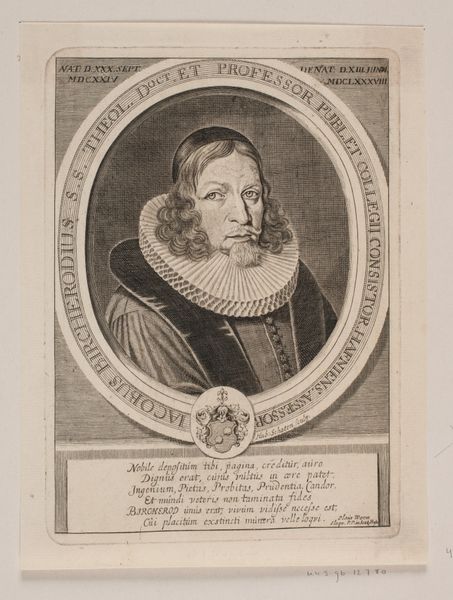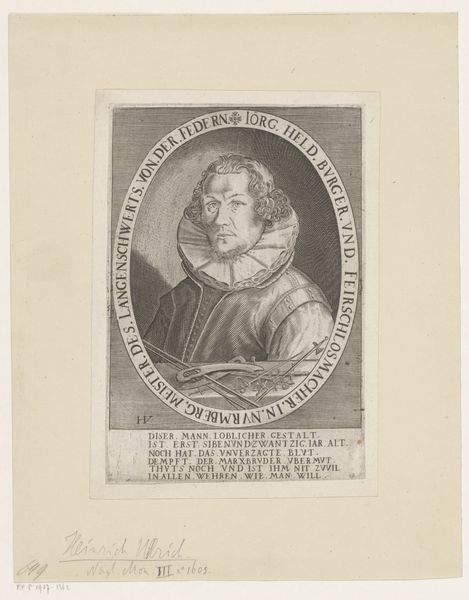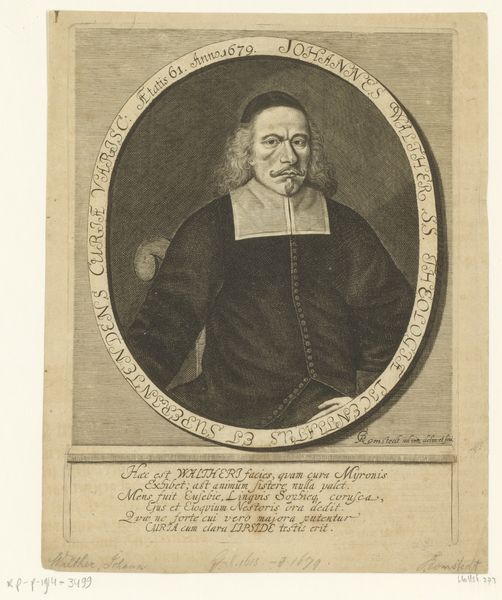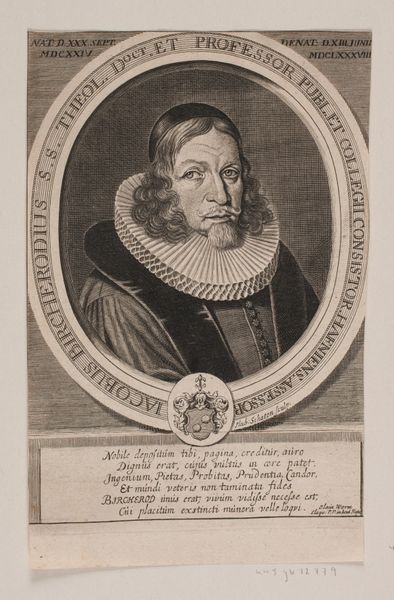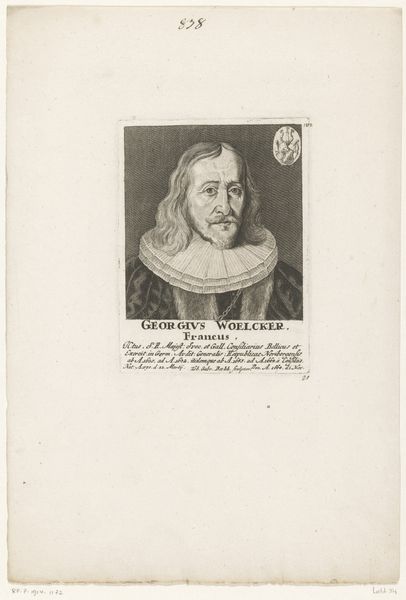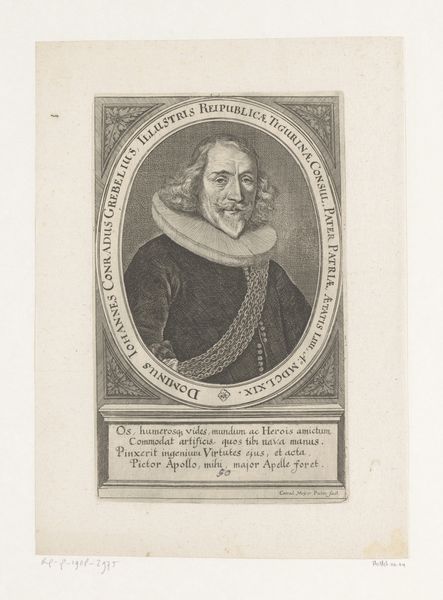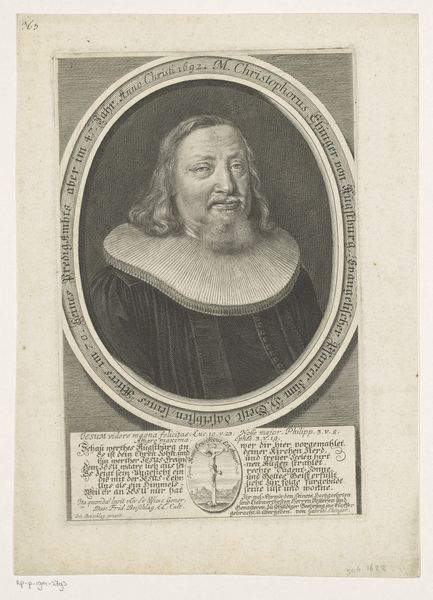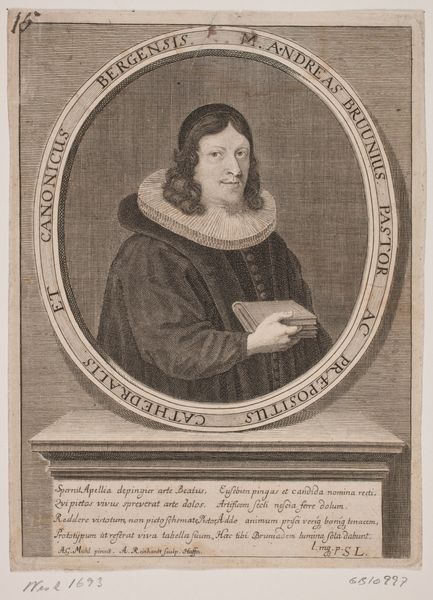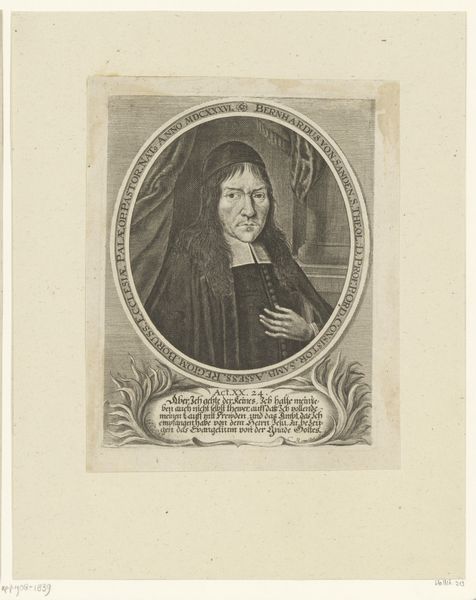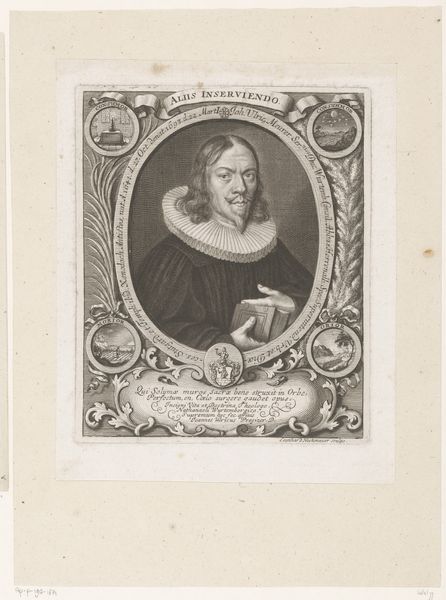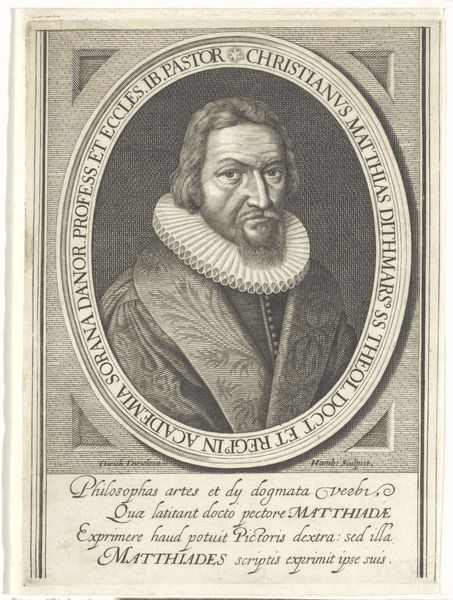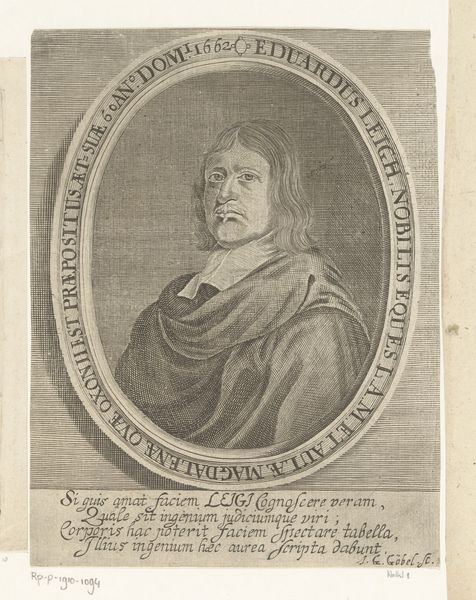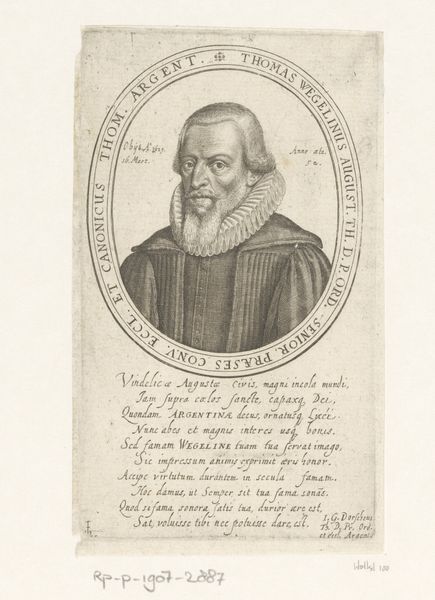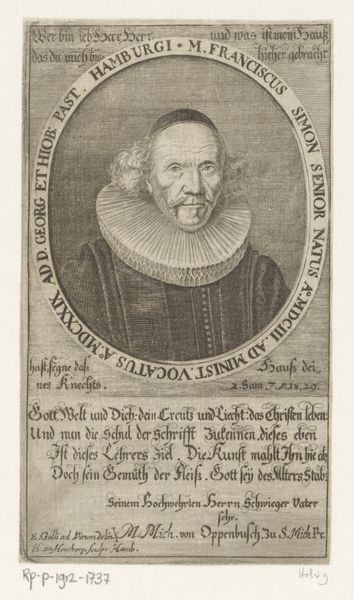
print, engraving
#
portrait
#
baroque
# print
#
old engraving style
#
history-painting
#
engraving
Dimensions: height 180 mm, width 133 mm
Copyright: Rijks Museum: Open Domain
Curator: Let's consider this intriguing portrait—a print, really an engraving—created in 1673 by H.M. Winterstein after G. Burckhardt. It depicts Georg Haccius, and what strikes me is how it encapsulates the formal visual language of the period. Editor: Immediately, the most noticeable element for me is its austere tone, almost solemn. Haccius’s expression feels severe. Given its age and rendering technique, I want to delve into who Haccius was and why someone would choose to represent him in this manner. Curator: Georg Haccius was indeed a figure of some importance. He was a theologian, a Licentiate in Theology, and a pastor at St. Mary Magdalen in Hamburg. As for why his portrait was engraved, it's tied to the baroque era's emphasis on public figures, but also to the rise of printmaking and the circulation of images. These portraits affirmed his status. Editor: Yes, I'm curious about how the inscription that surrounds the central portrait contributed to this perception. To me, those inscriptions elevate him. Is there an elegiac feel surrounding Haccius in terms of politics and gender? It feels like we are memorializing the past. Curator: Good eye. In this portrait, the elaborate Latin verses serve multiple purposes. They offer biographical information, praise his virtues, and align him with a classical tradition, amplifying his reputation and his public presence, crucial for maintaining authority in his role. It’s all about cementing his image within the intellectual landscape. Editor: Looking at his attire – that dark robe and especially that very crisp, white, multi-pleated ruff. While there may be an element of idealization, his outfit and mien indicate both piety and social standing. We get a sense of him not as an individual, but more as an exemplar, representative of a specific station and time. Curator: Precisely. And consider that these prints weren't merely hung in homes. They were bound into books, distributed amongst learned circles, and played a part in the formation of scholarly networks and discourses. His legacy was perpetuated and carefully controlled through imagery and distribution. Editor: Knowing a bit more about how the image functions in both religious life and local social history allows me to better understand Haccius's place in both realms. I'm intrigued to imagine how his image continued to travel across social landscapes even after his death. Curator: It highlights how art isn’t just an object of aesthetic appreciation, but an active participant in historical narratives and the construction of identity. An intersection of art, religion, and history.
Comments
No comments
Be the first to comment and join the conversation on the ultimate creative platform.
